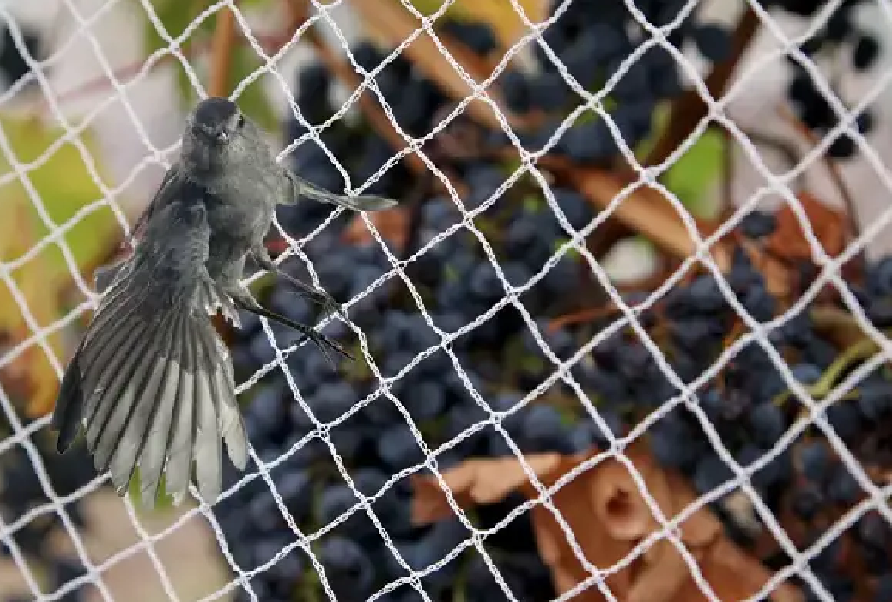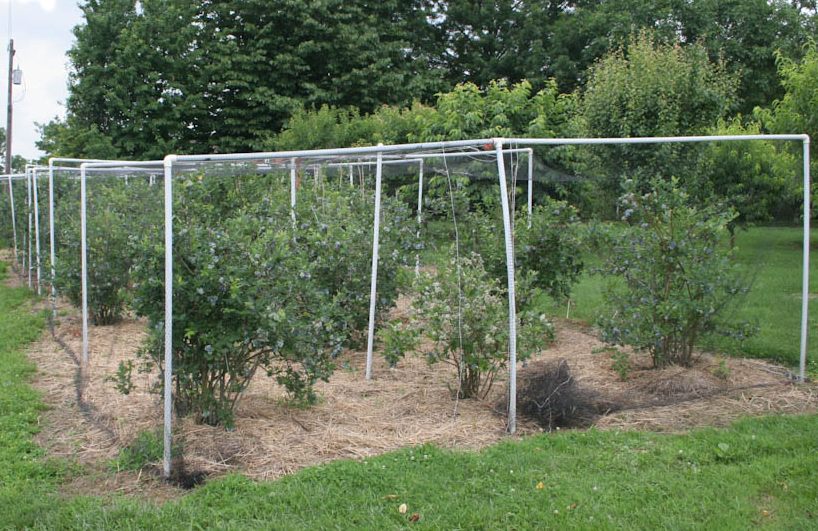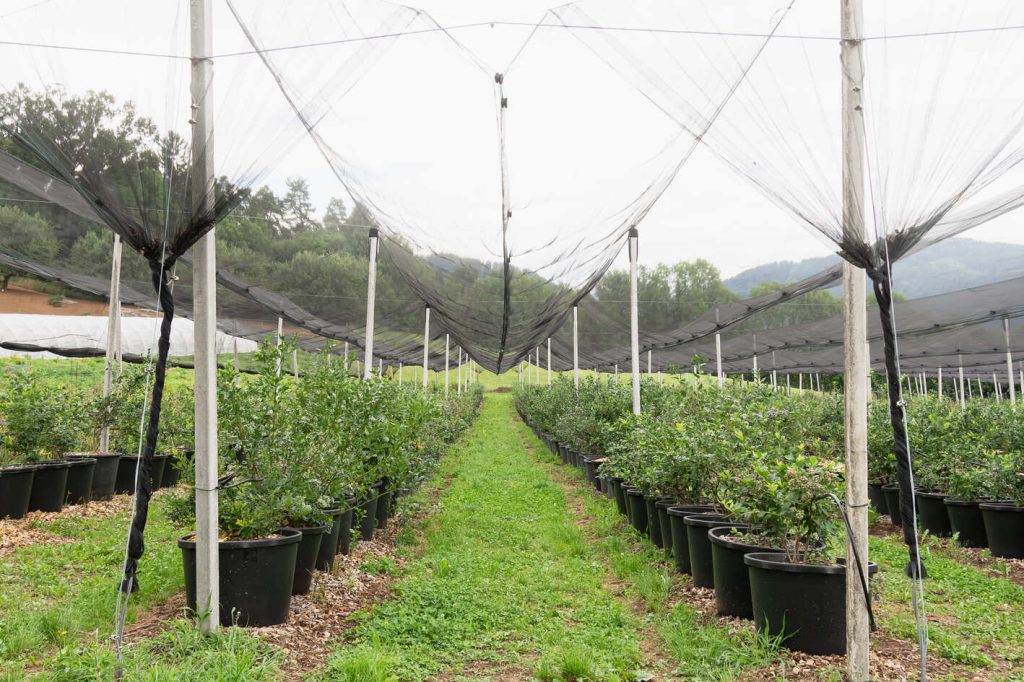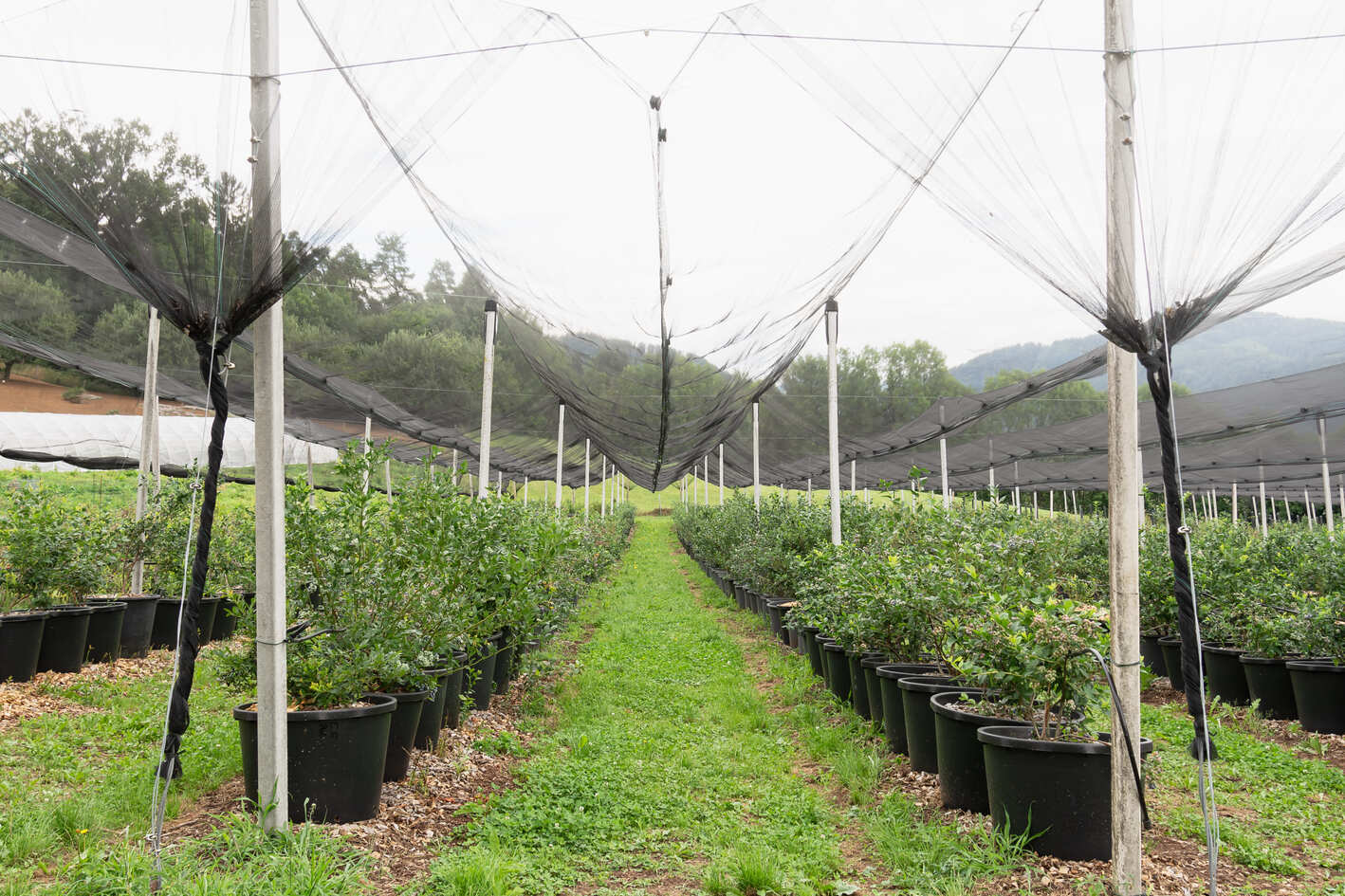Blueberries are not only nutritious and beneficial for health but also a crop of high economic value. However, they also attract a large number of birds and pests. Throughout the growth cycle of blueberries, during the flowering stage, the plants need protection from strong winds and heavy rains, whereas during the fruit ripening period, pests such as blueberry fruit flies and blueberry maggots become a major threat.
Therefore, covering the blueberry bushes with netting at this stage is crucial as it helps avoid birds and pests, ensuring a bountiful harvest.
The Science Behind Blueberry Netting
The importance of blueberry netting, also known as blueberry covers, lies in its dual function: deterring birds and shielding from pests to protect blueberries.
Birds, including robins and starlings, are particularly fond of ripened blueberries, while pests, such as blueberry fruit flies and maggots, can severely hinder growth and yield. To effectively combat these threats, high-quality blueberry netting is essential.

Anti-bird netting for blueberry
This kind of tree netting is specially designed with mesh sizes that are small enough to prevent the entry of birds and pests, yet large enough to allow sunlight, rain, and air to pass through. This careful balance ensures the healthy growth of the blueberries while preventing damage. Additionally, the netting is typically made of durable, UV-resistant materials, which ensures its longevity under various weather conditions.
How to Choose Blueberry Netting for Different Scenarios?
Selecting the right blueberry netting is crucial for the healthy growth of blueberries. Although we have touched upon the selection of blueberry netting mesh size, material, color, and price range in a related article on choosing bird netting, it’s worth reiterating the three main aspects to consider: material, mesh size, and price.
- Material: The netting material impacts its durability, efficacy, and environmental footprint. Recommended materials include Polypropylene, Nylon, and Polyethylene. Polypropylene is lightweight, easy to install, recyclable, and economical, but slightly less strong. Nylon is strong, elastic, and durable but relatively more expensive. Polyethylene is water-resistant, UV-resistant, sturdy, and durable but less elastic.
- Mesh Size: The mesh hole size is crucial for protecting blueberries from birds and pests. Generally, a mesh size of 1/2 inch (about 1.27 cm) to 3/4 inch (about 1.9 cm) is considered ideal. This size can block most birds while ensuring proper light and air circulation.
- Price: The netting price varies based on material, size, and service. Typically, retail market prices for bird netting range from $0.01 to $0.06 per square foot (larger sizes are usually more economical). For large orchards, consider sourcing directly from global suppliers or factories for better discounts.
For more information on selecting bird netting, you can visit: Best Bird Netting for Fruit Trees >>
Blueberry Netting Ideas for Small-scale or Home Use
Protecting your blueberries at home can be a straightforward and cost-effective process. While you can simply drape the net directly over the blueberry bushes to prevent birds from eating the ripe fruits, the following practical blueberry netting ideas and tips might be more effective:
1. Using Garden Stakes and Netting:
Before starting, you will need garden stakes made of wood, bamboo, or more durable materials like PE, aluminum, or iron. You will also need netting, garden pins, and stones.
First, measure the area around your blueberry bushes to determine how many stakes you will need and how much netting is required to cover the entire area. Next, insert the garden stakes into the ground at the corners and mid-points of the area you want to protect. Make sure the stakes are firmly anchored in the ground and are tall enough to cover the height of the bushes.

HDPE bird netting
Once the stakes are in place, drape the netting over them, creating a barrier that covers the entire area, including the top and sides. Secure the netting at the bottom with garden pins or stones to prevent birds and pests from accessing the bushes from underneath. Check for any gaps or openings in the netting and close them off.
Remember to lift the netting when you need to access the bushes for maintenance or harvesting, and then secure it again afterward. This method is cost-effective and can be easily adjusted or expanded as your blueberry bushes grow.
2. PVC Pipe Frame
A PVC pipe frame is a durable and cost-effective solution for protecting your blueberries from birds and pests. To build a PVC pipe frame, you will need PVC pipes, PVC connectors (elbows and tees), a saw or pipe cutter, and netting.
First, measure and cut the PVC pipes to fit the dimensions of your blueberry bushes. Assemble the pipes and connectors to create a frame that covers the entire bush. Make sure the frame is sturdy and stands well on its own.

PVC pipe frame blueberry netting structure – uky.edu
Next, drape the netting over the frame, ensuring it covers all sides and reaches the ground. Secure the netting at the bottom with garden pins, and stones, or by burying the edges in the soil. This will prevent birds and pests from accessing the bushes from underneath. Remember to lift the netting when you need to access the bushes for maintenance or harvesting, and then secure it again afterward.
3. Pop-up Netting Cage
Pop-up garden netting cages are a convenient and portable option for protecting your blueberries. These tents are available online or at garden centers and usually come with everything you need, including the frame, netting, and ground stakes.

Portable pop-up garden netting for blueberry
To set up a pop-up netting tent, first, clear the area around your blueberry bushes of any debris or obstacles. Next, unfold the tent and extend it fully. Some tents may have poles that need to be assembled, so follow the manufacturer’s instructions. Position the tent over the blueberry bushes and secure it to the ground using the included ground stakes.
Make sure the netting covers the bushes completely and reaches the ground. Check for any gaps or openings that birds or pests could use to access the bushes and close them off. Pop-up netting tents can be easily moved or stored when not in use, making them a flexible solution for protecting your blueberries.
Blueberry Netting Strategies for Commercial Farms
For large-scale commercial blueberry farms, it is crucial to select netting that is durable for outdoor use. Additionally, when constructing the blueberry netting system, it is essential to pay attention to the overall stability of the structure. Below are some blueberry netting ideas tailored for commercial purposes:
1. Overhead Netting System
An overhead netting system involves installing poles around the perimeter and throughout the blueberry field, and then draping the netting over the top. This creates a canopy that protects the entire field from birds and other pests.
Poles must be secured using ground anchors or concrete foundations to ensure stability during adverse weather conditions. The advantage of this system is that, if the structure is high enough, it allows people and machinery to move freely underneath, facilitating maintenance, harvest, and other activities.

Overhead blueberry netting structure
Also, once the structure is built, it can be repurposed in the future. For example, the bird netting can be replaced with shade cloth to create a shade system quickly. While this system is highly effective, it may require a significant investment in terms of installation and materials. It is essential to use durable and UV-resistant netting materials
2. Drap Over Netting System
Drape over netting involves draping the netting directly over blueberry bushes in rows. This technique is effective in preventing birds, pests, and insects from accessing the bushes. As blueberry drape netting isn’t very high, it’s less difficult to install, making it more cost-effective than overhead netting, but it may not be as convenient for bush maintenance and harvesting.

Draped netting support
For installation, first measure the area and number of blueberry bush rows to determine the appropriate netting width, length, and quantity of poles and other accessories needed. Then, install the support system by placing poles at regular intervals along the row and connecting them with steel wire ropes or brackets. Lastly, hang the net on the support system and secure its edges and connection points with ropes or connectors. Adjust the net to cover the entire protection area. For larger areas, net spreading machines can improve efficiency.
3. Hoop-Frame Netting System
The Hoop-Frame Netting System, inspired by common greenhouse structures, is a versatile and stable option for large-scale commercial blueberry farms. This system entails creating a series of hoop frames over the blueberry bushes, followed by draping bird or insect netting over these frames. The hoops can be crafted from durable materials such as galvanized steel or PVC, which can be conveniently acquired from commercial greenhouse manufacturers and assembled using their provided tutorials. This not only ensures protection from birds and pests but also offers a shield against harsh weather conditions.

Hoop-frame net structure for blueberry trees – missouristate.edu
One of the significant advantages of this system is its stability against wind and other weather elements, compared to simpler drape-over systems. It also allows for easier maintenance and harvesting due to its accessibility. Moreover, its versatile nature means it can serve multiple purposes; for instance, during the offseason, the netting can be replaced with a plastic cover to create a greenhouse effect for young plants or to extend the growing season.
FAQs
1. When to install blueberry nets?
The best time to install blueberry nets is during the flowering stage of the bushes, which typically occurs in the spring season, around April to May in the Northern Hemisphere. This is when the bushes need protection from strong winds and heavy rains. As the berries ripen, usually from May to July, birds and pests like blueberry fruit flies and maggots become a significant threat. Covering the bushes with netting at this stage keeps the birds and pests away, ensuring a bountiful harvest.
2. How can I maintain and clean the blueberry nets?
Regularly check the netting for any signs of wear or damage. Clean the nets after each harvest season by gently brushing off any debris and washing them with a mild detergent and water. Rinse thoroughly and let them dry completely before storing. This will help to ensure the netting remains effective and durable for the next season.
3. How should I store the blueberry nets to ensure their durability?
After cleaning and completely drying the nets, fold them neatly and store them in a cool, dry place, away from direct sunlight and sharp objects. This will help prevent the netting from deteriorating or getting damaged while in storage.
4. What can I use as a substitute if I don’t have blueberry nets?
If you don’t have blueberry nets, you can use other types of bird netting or garden netting with a mesh size of about 1.5 cm (1/2 inch) to prevent birds and pests from getting through but still allow sunlight, rain, and air circulation.
Additionally, reflective objects like aluminum foil strips or old CDs can be hung around your bushes to scare away birds. Visual bird scare devices like fake owls or predatory birds can also be used, as birds tend to avoid areas where they feel threatened.
Alternative Methods:
Audio devices playing recordings of predator birds or bird distress calls can be used to frighten birds away. If all else fails, mosquito nets can be used as a last resort, but they may not be as effective as the mesh size may be too small to allow adequate sunlight and rain to reach the plants, and the material may not be durable enough for outdoor use.
Regardless of the method chosen, it is important to regularly check and secure the netting or alternative methods to ensure maximum protection for your blueberry bushes.
5. What precautions should I take when installing blueberry nets?
When installing blueberry nets, make sure to measure the area around your blueberry bushes accurately to determine how much netting is required.
The netting should cover the entire area, including the top and sides of the bushes. Secure the netting at the bottom with garden pins or stones to prevent birds and pests from accessing the bushes from underneath. Check for any gaps or openings in the netting and close them off.
Also, remember to lift the netting when you need to access the bushes for maintenance or harvesting, and then secure it again afterward. This will help to ensure the most effective protection for your blueberries.
